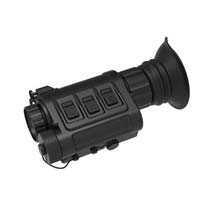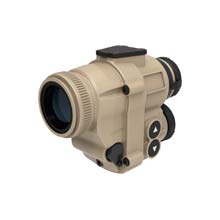How Advanced Thermal Imaging Is Redefining Industry Standards

In a world driven by innovation, advanced thermal imaging technology has emerged as a transformative force, reshaping industry standards across various sectors. This cutting-edge technology, once confined to niche applications, is now making significant strides, promising unparalleled precision and efficiency.
Key Features of Advanced Thermal Imaging
One of the primary drivers behind the widespread adoption of advanced thermal imager is its impressive set of features. With high resolution and precision, these systems provide a detailed and accurate view of thermal patterns. Real-time data acquisition ensures that businesses can make informed decisions on the fly, responding promptly to dynamic conditions. The improved temperature measurement accuracy is crucial for applications ranging from manufacturing to energy management. Additionally, the enhanced portability and user-friendly interfaces make these devices accessible and practical for a wide range of professionals.

Applications Across Industries
1. Manufacturing and Quality Control
In the realm of manufacturing, advanced thermal imaging has become a game-changer for quality control. The technology detects defects and anomalies in real-time, allowing for swift corrective action. Manufacturers can ensure product quality and compliance with industry standards, reducing waste and enhancing overall efficiency.

2. Energy Efficiency and Sustainability
Industries are increasingly turning to advanced thermal imaging to monitor and optimize energy consumption. These systems identify areas for resource conservation, leading to more sustainable practices. By pinpointing energy inefficiencies, businesses can implement targeted improvements, reducing their environmental impact and operational costs simultaneously.

3. Building and Infrastructure
The use of advanced thermal imaging extends to the construction and infrastructure sectors, where it plays a vital role in assessing structural integrity. From identifying potential weaknesses to managing HVAC systems more efficiently, the thermal camera ensures that buildings stand strong and operate optimally.
4. Security and Surveillance
In the realm of security, advanced thermal imaging excels in low-light conditions, providing a powerful tool for intruder detection. The technology enhances perimeter security, offering a comprehensive solution for safeguarding assets and personnel.

Case Studies in Real World
To illustrate the real-world impact of advanced thermal cameras, let's delve into a few success stories. InfiRay has used handheld thermal cameras to do daily inspections for an electric utility. During the inspection, InfiRay found that the temperature of one electrical device in the company's distribution facility was significantly different from the other two. InfiRay thermal imaging helped the company save a lot of money by identifying the potential problem before it got worse.

Future Trends in Thermal Imaging Technology
Looking ahead, the integration of advanced thermal imager with artificial intelligence and machine learning stands out as a key trend. This promises even greater automation and analysis capabilities, opening new frontiers for applications. The miniaturization of devices and increased affordability are also on the horizon, making this technology accessible to an even broader audience. Furthermore, advancements in multi-spectral imaging are anticipated, expanding the range of detectable elements and enhancing overall functionality.

Advanced thermal imaging is more than just a tool – it's a catalyst for change across industries. From manufacturing to security, its applications are diverse and impactful. As businesses embrace this technology, they redefine industry standards, setting new benchmarks for efficiency, sustainability, and quality.

















